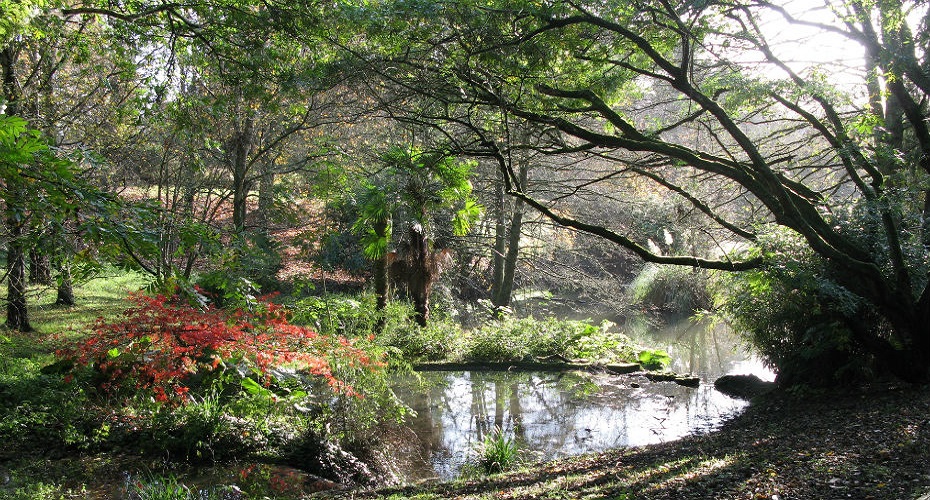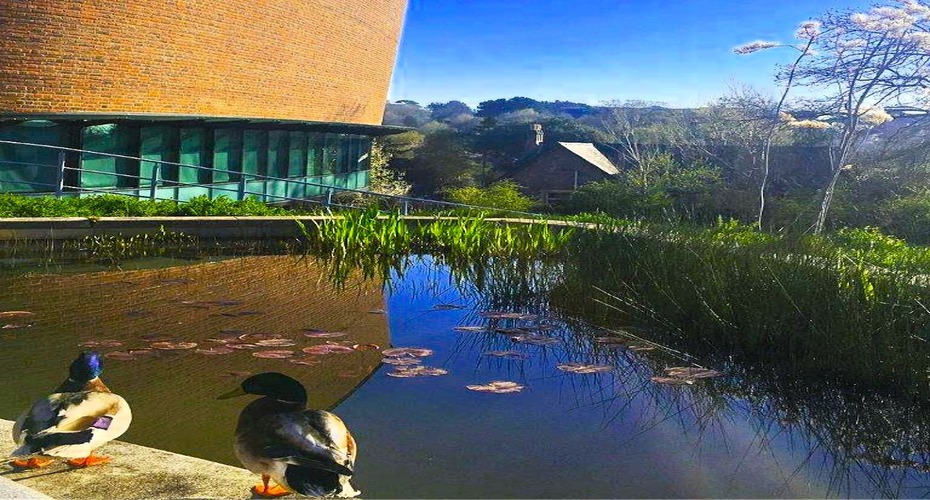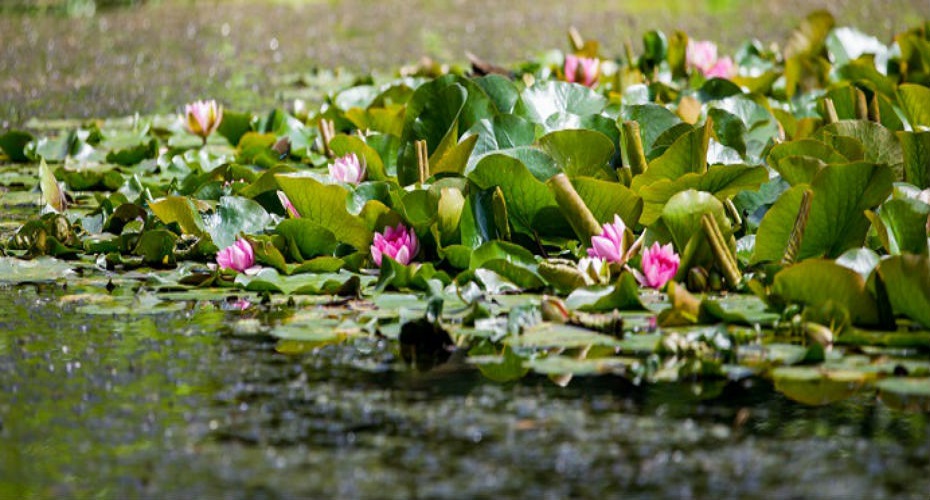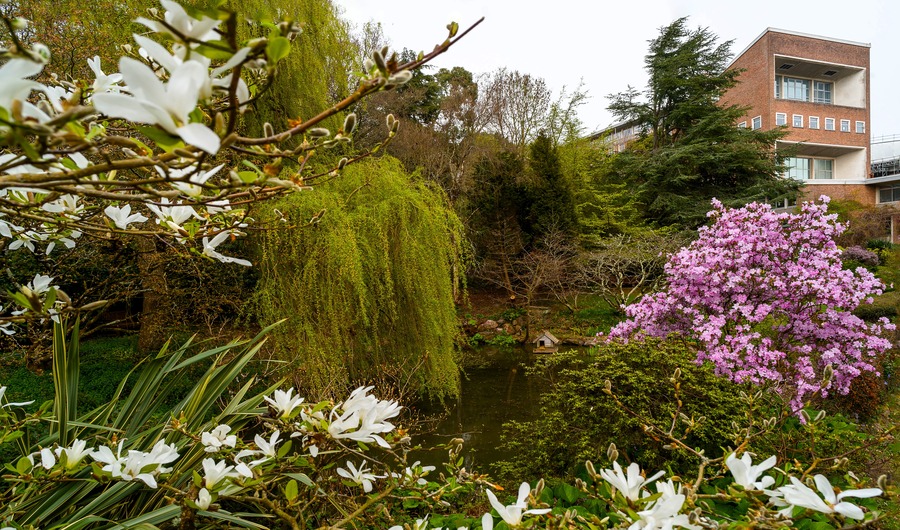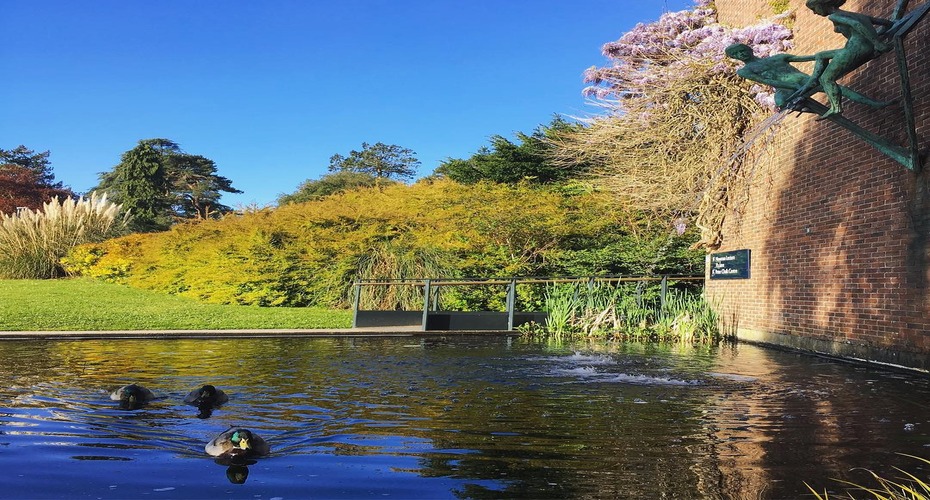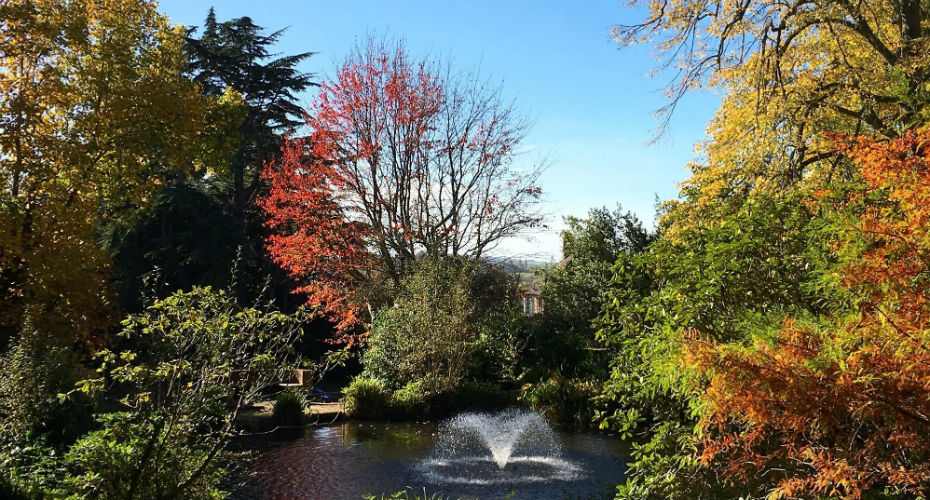Ponds and watercourses
The natural topography and geology of the Streatham Campus, from its high point around the Sports Park to the lower levels along Prince of Wales Road, provide an excellent opportunity for water features in the landscape.
The original water feature on campus was Reed Pond, created as a herringbone brick and clay puddled pond, as an element of the Veitch designed landscape around Streatham Hall (now Reed Hall). It remains a popular ornamental feature. Recent works have involved draining and cleaning the pond, pruning some of the overhanging branches, re-landscaping the island and replacing the pumps, to make the fountain more efficient.
The structure of the Streatham Campus, as we know it today, was principally created during the 60s and 70s following a development plan presented to the University by William Holford and Partners. It was during this period that tree belts were strengthened and watercourses created, to define enclosed landscaped areas in which the academic and research buildings could sit.
The Taddiforde brook runs through the boundary of the campus from Prince of Wales Road, under New North Road and eventually joins the Exe. This natural feature supports a wide variety of wildlife, with evidence of otter activity.
There are also three man-made water features on campus that use the site topography and help outline some of the landscaped compartments that define the estate’s structure. There are The Plantation, The Taddiforde Ponds and the Hoopern/Business School Ponds. Each of these mimic natural watercourses and provide habitats for insects, amphibians, birds and mammals; they continue to be managed sympathetically. Plants such as Camellia, Rhododendron and Azara sit alongside eco-strips left un-mown to provide a haven for nesting birds, frogs and newts. Habitat piles and bug hotels support insects and mini-beasts.
The campus also has a number of formal water features associated with buildings and colleges. Some of these e.g. Newman Pond feature artworks. There are also water features outside Building:One and in the courtyard at Streatham Court, Queens café and Arab and Islamic Studies.
These formal ponds contain typical water plants and marginals, such as Nymphaea (water lily) and Eichhornia (water hyacinth).
The Forum, at the heart of Streatham Campus, boasts the newest water features. A series of ponds were created which are sustainably designed to take water from the roof of the building and store it. The rainwater filters naturally from the high point of the pond on the Piazza, down the side of the Auditorium to the lower holding pond at the side of the Library and Streatham Farm. This new feature is surrounded by native planting, including a wildflower meadow and has been colonised by a variety of wildlife, including dragonflies.
The University of Exeter is happy to provide permitted access to its Streatham Campus. Visitors are, however, reminded to follow guidance, which includes keeping out of and taking care around the water features on campus, which vary in depth, function and construction.

